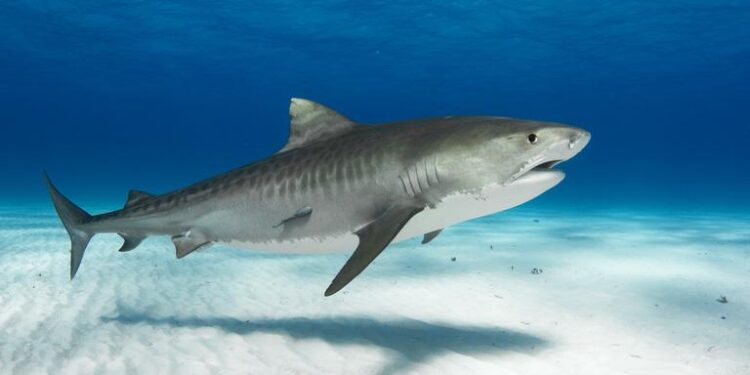Fifty years after the release of Steven Spielberg’s iconic film Jaws, the fascination with sharks endures-both on screen and in the scientific community. While the movie sensationalized these apex predators, it also sparked widespread interest and fear that shaped public perception for decades. Today, scientists continue to dive deeper into understanding shark behavior, biology, and ecology, revealing complexities that challenge long-held myths. In this special report, The New York Times explores how the legacy of Jaws persists in marine research and the ongoing efforts to uncover the mysteries of these enigmatic creatures.
Jaws at 50 Scientists Explore Shark Behavior and Ecology
Over the past five decades since the release of Jaws, marine biologists and ecologists have significantly advanced our understanding of shark behavior, dispelling many myths fueled by the film’s portrayal. Sharks, once feared as mindless predators, are now recognized as complex creatures exhibiting diverse hunting strategies and social interactions. Recent research focuses on their migration patterns, sensory capabilities, and role as apex predators maintaining the health of ocean ecosystems. Through satellite tagging and underwater observation, scientists have uncovered how sharks navigate vast ocean territories and adapt to environmental changes.
Key areas of shark research today include:
- Communication and social structures among shark groups
- Impact of climate change on shark populations
- Shark responses to human activity and conservation efforts
- Biological mechanisms behind their highly developed sensory systems
| Species | Average Lifespan | Range (km²) | Conservation Status |
|---|---|---|---|
| Great White Shark | 70 years | 10,000+ | Vulnerable |
| Hammerhead Shark | 30 years | 5,000 – 10,000 | Endangered |
| Whale Shark | 100+ years | 15,000+ | Endangered |
| Blacktip Reef Shark | 25 years | 1,000 – 5,000 | Near Threatened |
Unraveling the Myths How Research Challenges Popular Perceptions of Sharks
Contrary to the terrifying image cemented by popular culture, recent scientific studies reveal that sharks are far from mindless predators. Researchers have found that many species exhibit complex behaviors, including social bonding, communication, and even problem-solving abilities. This evolving understanding challenges the simplistic portrayal of sharks as ruthless killers and highlights their essential role in maintaining oceanic ecosystems. For example, some species display migratory patterns coordinated within groups, hinting at a level of cooperation once thought exclusive to mammals.
Key findings reshaping perceptions include:
- Sharks’ diverse diets-many prefer slow-moving prey and scavenging over aggressive hunting.
- Complex sensory systems enabling them to detect environmental changes and navigate vast distances.
- Unexpected longevity and reproductive strategies that influence their population dynamics.
| Shark Species | Average Lifespan | Behavior Highlight |
|---|---|---|
| Whale Shark | 70 years | Gentle filter feeder |
| Great White | 30 years | Solitary ambush hunter |
| Hammerhead | 20 years | Group socializing behavior |
Advancing Conservation Efforts Recommendations for Protecting Shark Populations Worldwide
To counteract declining shark numbers globally, experts emphasize the necessity of multi-faceted conservation strategies that address both ecological and socio-economic challenges. Key recommendations include the expansion of marine protected areas designed specifically to safeguard critical shark habitats such as breeding and nursery grounds. Additionally, enhancing international cooperation is vital to standardize fishing regulations, combat illegal shark finning, and improve data sharing across borders. These efforts must be paired with public education campaigns to dismantle misconceptions about sharks and foster community stewardship.
Effective policies also hinge on robust scientific monitoring, employing emerging technologies like satellite tracking and environmental DNA (eDNA) sampling to gain real-time insights into shark populations and migration patterns. Below is a summary of impactful conservation actions proposed by leading marine biologists and organizations:
| Conservation Action | Purpose | Expected Impact |
|---|---|---|
| Establishing Shark Sanctuaries | Protect breeding/nursery habitats | Increase juvenile survival rates |
| International Fishing Regulations | Limit overfishing and bycatch | Stabilize shark populations |
| Technological Monitoring | Track migrations and population | Inform adaptive management |
| Educational Outreach | Raise public awareness | Reduce negative perceptions |
Insights and Conclusions
As “Jaws” marks its 50th anniversary, the film’s legacy endures not only in cinema but in the ongoing quest to understand sharks-creatures that continue to inspire both fear and fascination. Scientists remain dedicated to unraveling the complexities of shark behavior, biology, and ecology, driven by a blend of caution and curiosity sparked decades ago. While the movie transformed public perception and shark conservation efforts, researchers emphasize that the true story of these apex predators is still being written beneath the waves.































